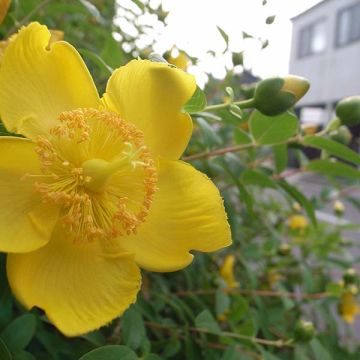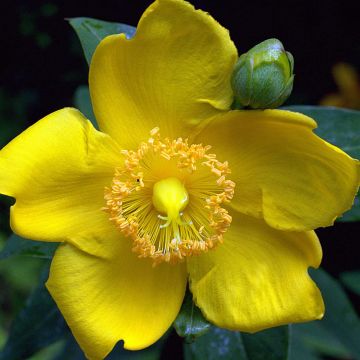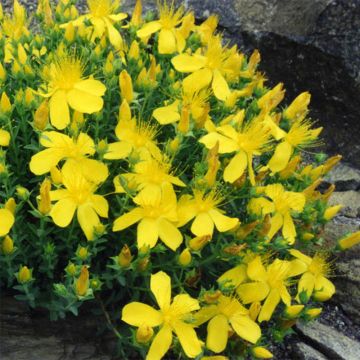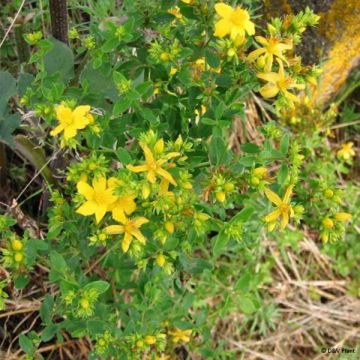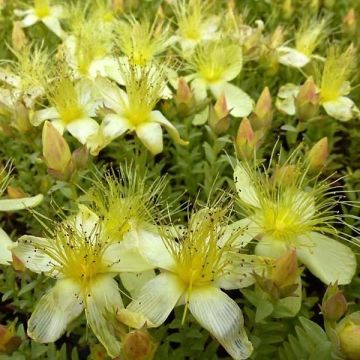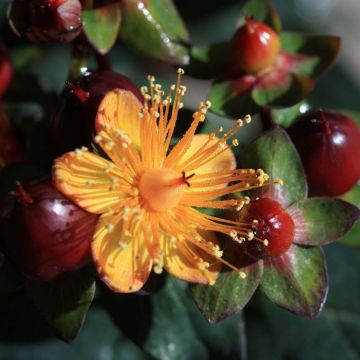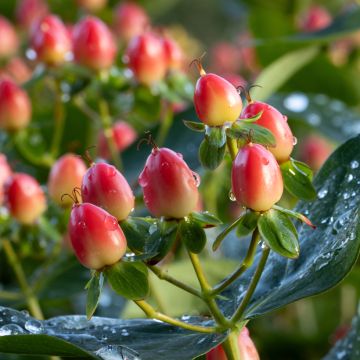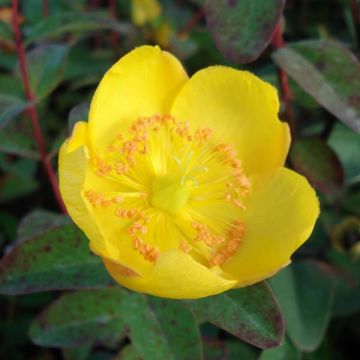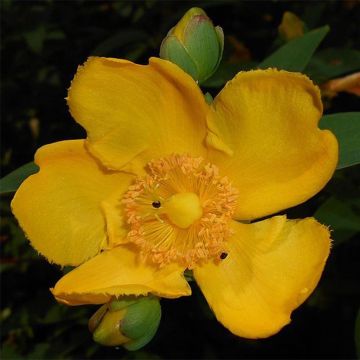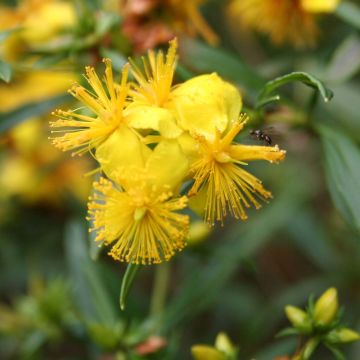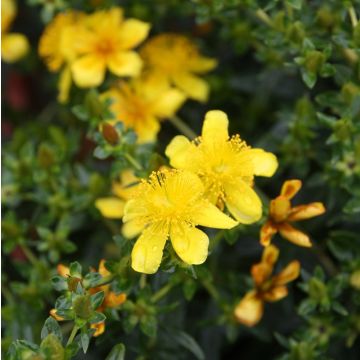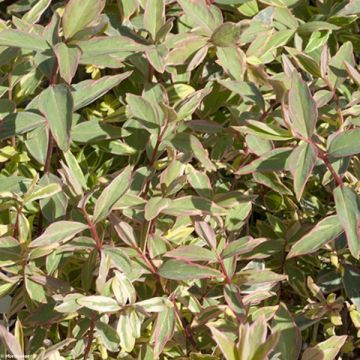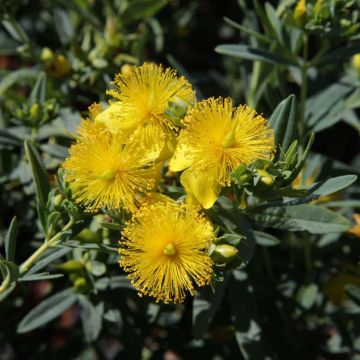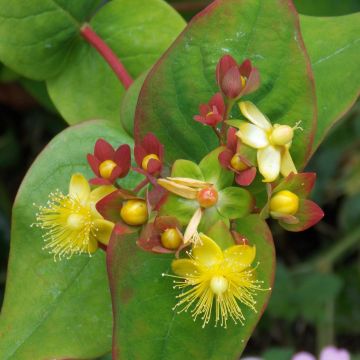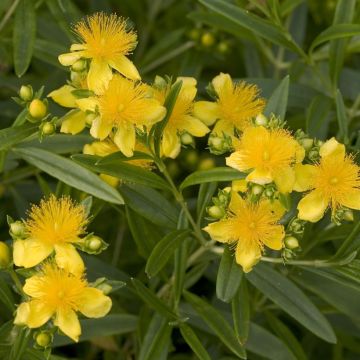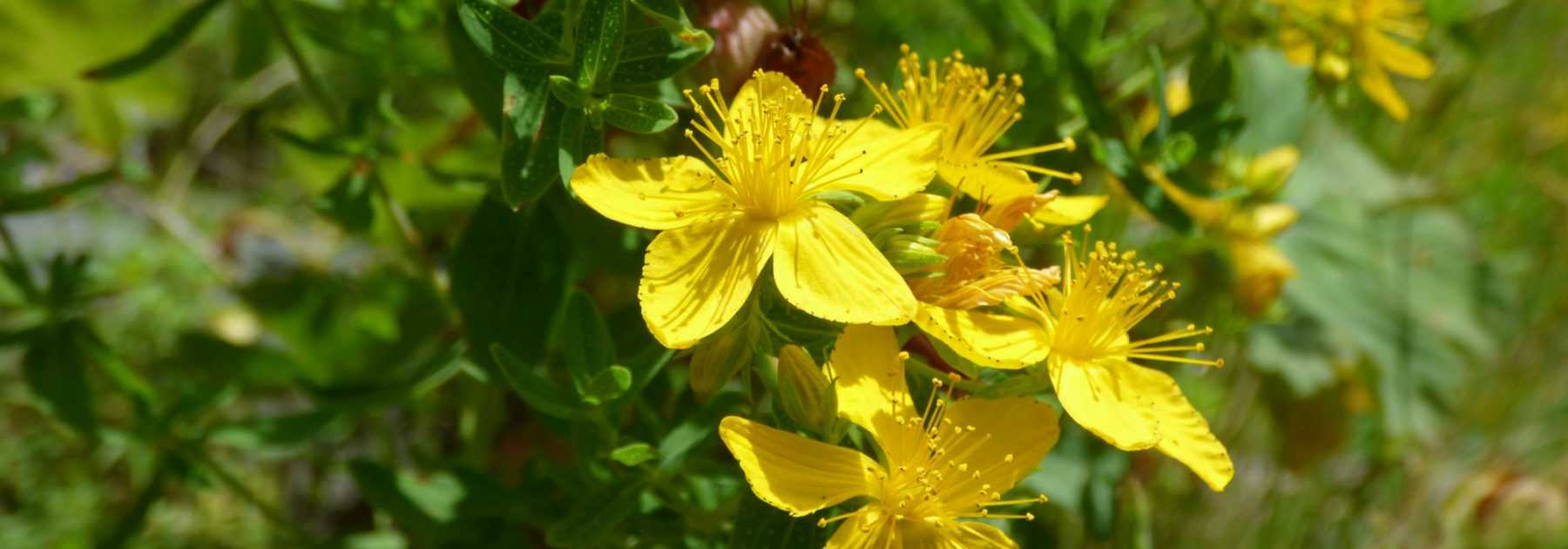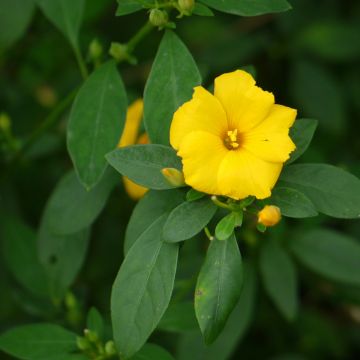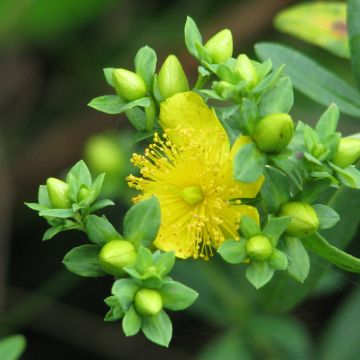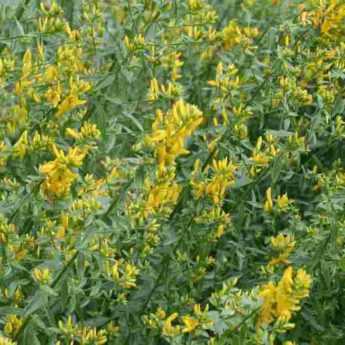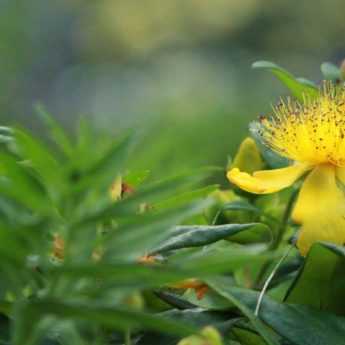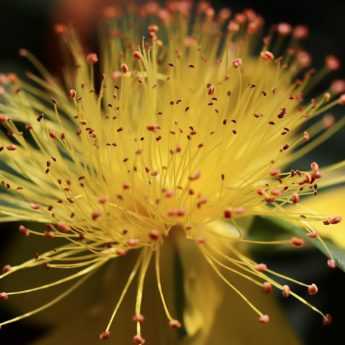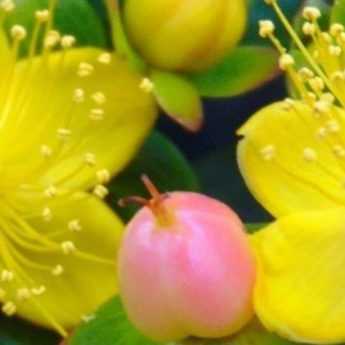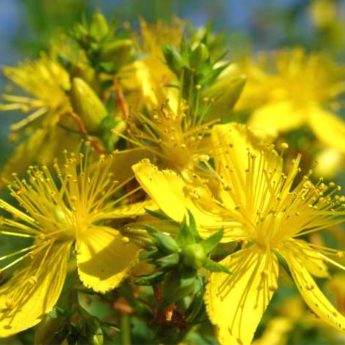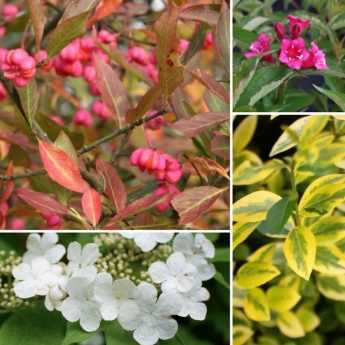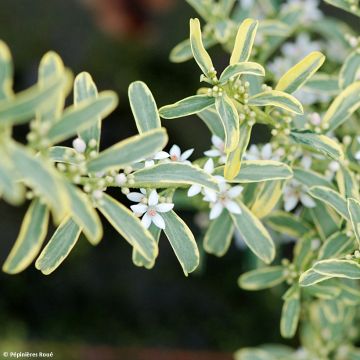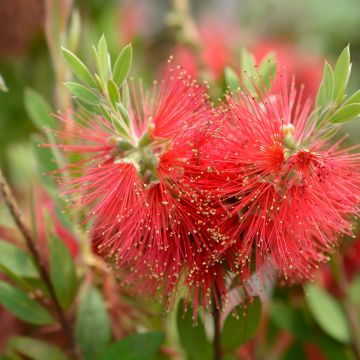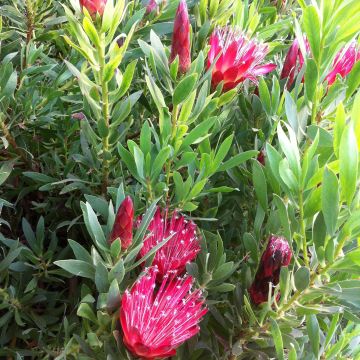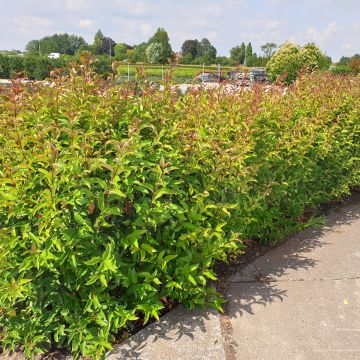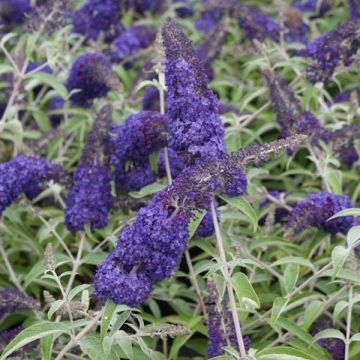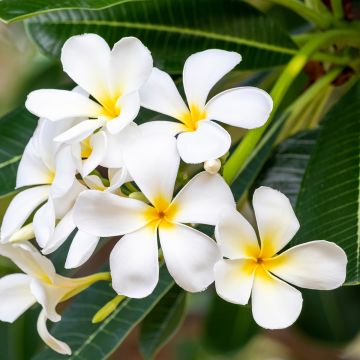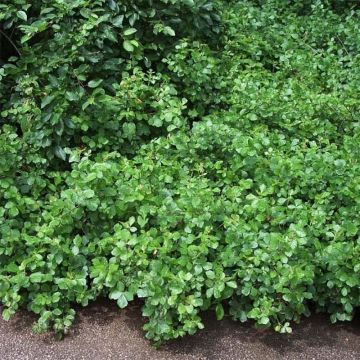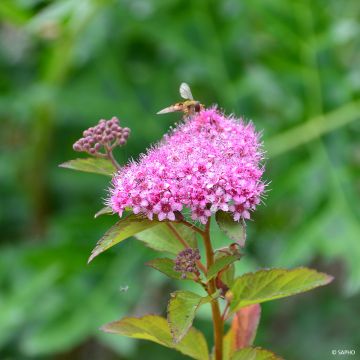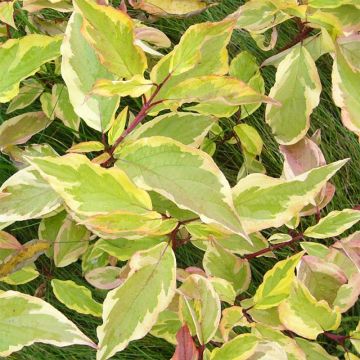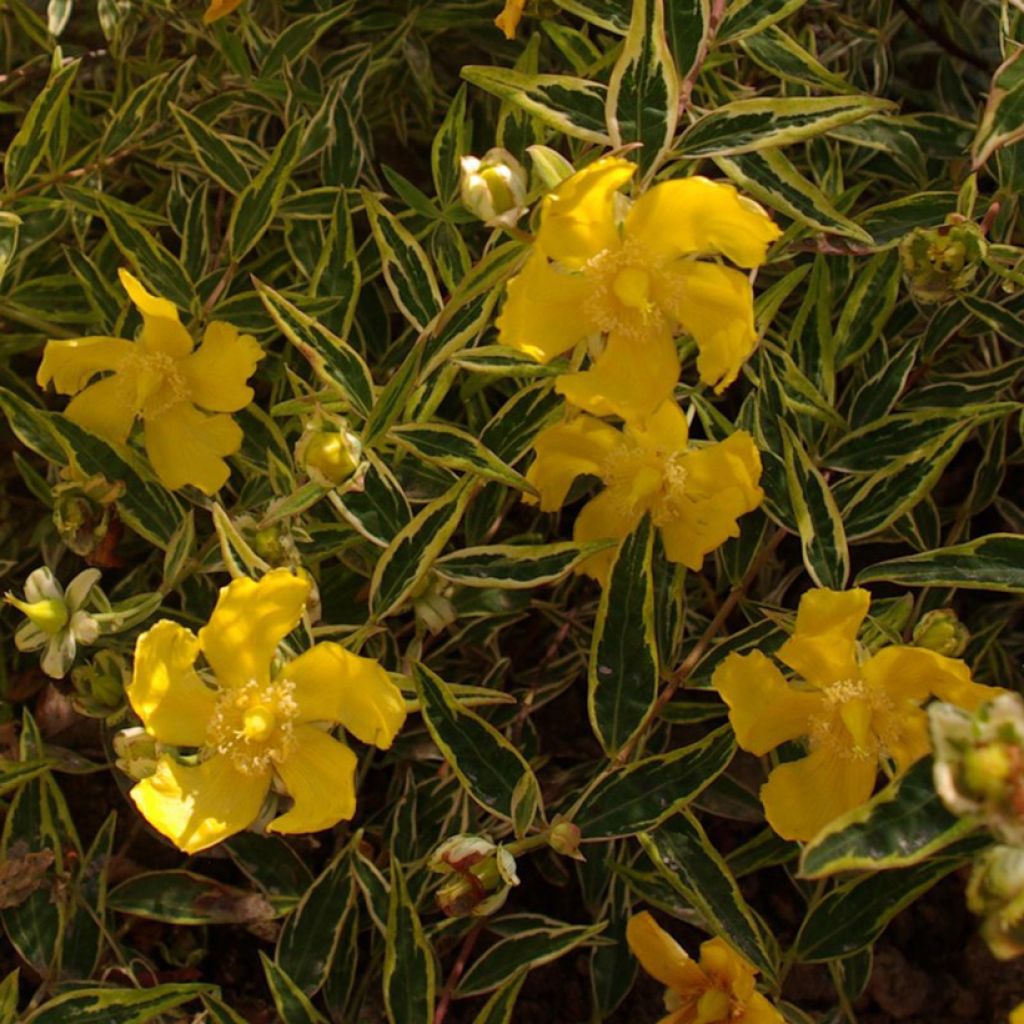

Hypericum Hidcote Limelight - Millepertuis panaché
Hypericum Hidcote Limelight - Millepertuis panaché
Hypericum x hidcoteense (cyathiflorum x calycinum ) Hidcote Limelight
Millepertuis de Hidcote 'Limelight'
Craquez pour d'autres variétés similaires en stock
Voir tout →Garantie de reprise de 24 mois sur cette plante
Plus d'infos
Nous garantissons la qualité de nos plantes durant un cycle végétatif complet.
Nous remplaçons à nos frais toute plante n'ayant pas repris dans des conditions climatiques et de plantation normales.
A partir de 7,90 € pour une livraison en relais et 6,90 € pour une livraison à domicile
Livraison express à domicile en 24-48h: 8,90 €.
Cette plante est-elle adaptée à mon jardin ?
Je crée mon profil Plantfit →
Description
Le Millepertuis arbustif 'Hidcote Limelight' est une version à feuillage panaché de jaune crème de l'excellent hybride 'Hidcote'. Plus compact que son parent, mais aussi encore plus lumineux, ce petit arbuste bas et dense offre la même floraison jaune d'or interminable, entre juillet et octobre. Son beau feuillage persiste souvent en hiver. Une plante sans entretien, peu exigeante, ornementale, florifère… qui trouvera forcément sa place au jardin ou en bac sur une terrasse.
L'Hypericum 'Hidcote Limelight' est une obtention horticole récente. Le cultivar 'Hidcote' est quant à lui le fruit d'une hybridation spontanée entre l'Hypericum calycinum, natif de Turquie, une jolie peste florifère presque indestructible, et, probablement, l'H. cyathiflorum, un millepertuis arbustif hybride aux origines un peu obscures. Cet arbuste très planté dans les jardins apparut fortuitement dans les années 50, dans le jardin du Manoir de Hidcote, situé au sud-ouest de l'Angleterre. Il appartient à la famille des Hypericacées (anciennement Clusiacées). La variété 'Hidcote Limelight' est un arbuste de croissance moyennement rapide, le buisson atteint généralement 80-90 cm de hauteur pour 1,10 à 1,30 m de largeur, selon les conditions de culture. Il possède un port dense et arrondi, étalé, porté par des tiges plus ou moins rouges à brunes. Elles portent de longues feuilles entières, semi-persistantes à persistantes en climat doux. Des feuilles allongées, pointues, coriaces, d'un beau vert légèrement bleuté, plus ou moins marginées de jaune clair à blanc crème. Cette plante fleurit pratiquement quatre mois de l'année, de juin-juillet à septembre-octobre, avec une interruption durant les semaines les plus chaudes. Les fleurs, produites en abondance, de 6-7 cm de diamètre, sont composées de 5 pétales arrondis, jaune d'or, disposés en coupe ouverte. Le centre de la fleur est occupé par une couronne d'étamines orangées, saillantes, assez longues. Cette floraison nectarifère est suivie par la formation de quelques fruits coniques de couleur rouge, bleus à maturité. La durée de vie de cet arbuste est de l'ordre de 15 à 20 ans.
Les millepertuis sont appréciés pour leur très longue floraison et leur réelle facilité de culture en tous sols et sous tous nos climats, même en bord de mer. Si l'on aime les fleurs jaunes et les feuillages panachés, l'Hypericum 'Hidcote Limelight' fait partie des premiers arbustes à installer dans un jardin tout neuf, y compris lorsque l'on débute en jardinage. Il excelle dans les massifs d'arbustes bas et dans les petites haies fleuries. On peut le planter à côté d'arbustes à feuillages sombres, ou de buissons sobres et élégants tels que le buis et ses alternatives. Sa floraison jaune étant estivale, elle ne rentrera pas en compétition avec celle des arbustes à floraisons printanières plus pastel. Parfaitement rustique, il se plantera en plein soleil au nord de la Loire, mais à mi-ombre en climat chaud, pour préserver son feuillage de la morsure d'un soleil trop brutal.
Hypericum Hidcote Limelight - Millepertuis panaché en images...
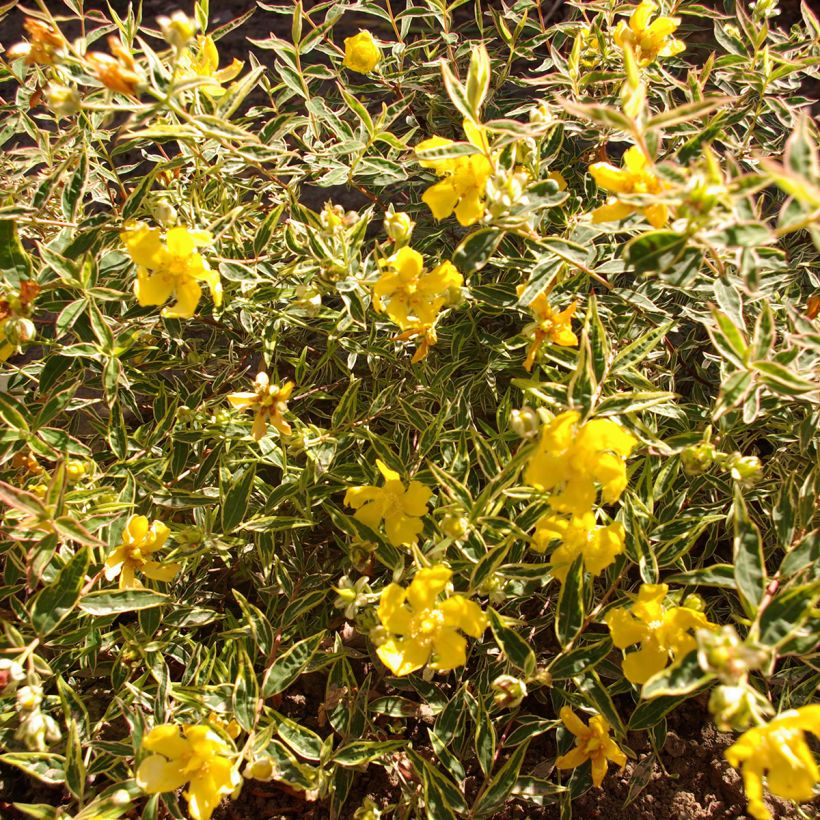

Port
Floraison
Feuillage
Botanique
Hypericum
x hidcoteense (cyathiflorum x calycinum )
Hidcote Limelight
Hypericaceae (Clusiaceae)
Millepertuis de Hidcote 'Limelight'
Hypericum patulum 'Hidcote Limelight', Hypericum hookerianum 'Hidcote Limelight', Hypericum calycinum 'Hidcote Limelight'
Horticole
Autres Millepertuis (Hypericum)
Plantations et soins
Plantez l'Hypericum 'Hidcote Limelight' en situation ensoleillée au nord de la Loire, ou de mi-ombre, ou même d'ombre en climat chaud, à l'abri du vent. Son feuillage peut être abîmé par un soleil trop brûlant. Il a besoin d'un sol souple, assez profond, même calcaire et surtout drainant, car il redoute l'humidité stagnante en hiver. Il est rustique jusqu'à -20°C. Il est peu sujet aux maladies et ses ennemis sont rares. Effectuez une taille de mise en forme, en fin d'hiver.
Quand planter ?
Pour quel endroit ?
Soins
Nos conseils plantation et soins
Transplanter un arbuste
notre spécialiste
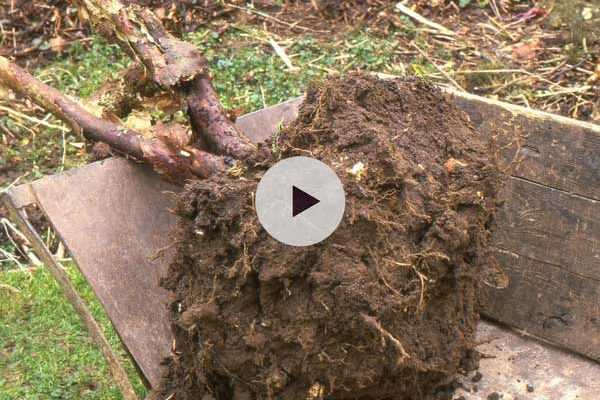
Cet article n'a pas encore reçu d'avis; soyez le premier à partager votre expérience.
Arbustes à floraison estivale
Vous n'avez pas trouvé votre bonheur ?
La rusticité est la température hivernale la plus basse qu'une plante puisse endurer sans subir de dommages sérieux, voire mourir. Cette rusticité est toutefois affectée par l'emplacement (zone abritée, comme un patio), les protections (voile d'hivernage) et le type de terre (la rusticité est améliorée par un sol bien drainé).

Conditions Générales d'Utilisation du Service Photos Client
Dans le but de favoriser l’interaction et le partage d'expériences entre jardiniers, Promesse de fleurs propose différents services permettant le dépôt de contenus sur son Site – via notamment le module « Partage de photos».
L’Utilisateur s’interdit de:
- Publier tout contenu illégal, préjudiciable, injurieux, raciste, incitant à la haine, révisionniste, contraire aux bonnes mœurs, portant atteinte à la vie privée ou portant atteinte aux droits privatifs de tiers, notamment le droit à l’image des personnes et des biens, le droit de propriété intellectuelle ou le droit au respect de la vie privée
- Déposer des contenus pour le compte d’un tiers
- Usurper l’identité d’un tiers et/ou publier toute information personnelle d’un tiers
D'une manière générale, l’Utilisateur s’engage à s’abstenir de tout comportement contraire à l’éthique
L’ensemble des Contenus (notamment textes, commentaires, fichiers, images, photos, vidéos, œuvres, etc… ), éventuellement soumis à des droits de propriété, propriété intellectuelle, droit à l’image ou autre droit privatif restent la propriété de l’Utilisateur, sous réserve des droits limités accordés par la licence définie ci-dessous à Promesse de fleurs. Les Utilisateurs sont libres de publier ou non de tels Contenus sur le Site via notamment le service « Partage de photos » et acceptent que ces Contenus deviennent publics et librement accessibles notamment sur Internet.
Ils reconnaissent, s’engagent et garantissent disposer de l’ensemble des droits et autorisations nécessaires pour une telle publication sur le Site, notamment au titre de la législation en vigueur et des droits au respect de la vie privée, de propriété, de la propriété intellectuelle, à l’image, des contrats ou de toute autre nature. Par une telle publication sur le Site, les Utilisateurs ont conscience d'engager leur responsabilité en tant qu'éditeur du Contenu au sens de la loi, et accordent sur le dit Contenu, pour toute la durée de publication, à Promesse de fleurs, une licence non exclusive, gratuite, mondiale, incluant les droits de reproduction, de représentation, de chargement, d’affichage, d’exécution, de transmission, de stockage.
Les Utilisateurs autorisent également que leur nom puisse être associé au Contenu et acceptent que cette association ne soit pas toujours faite.
Par leur publication, les Utilisateurs autorisent qu'un Contenu puisse devenir automatiquement accessible sur internet, notamment sur d'autres sites et/ou blogs et/ou pages web du site Promesse de fleurs incluant notamment les pages des réseaux sociaux et le catalogue de Promesse de fleurs.
Les utilisateurs peuvent librement obtenir le retait des contenus confiés, en contactant le service client via le formulaire de contact

































